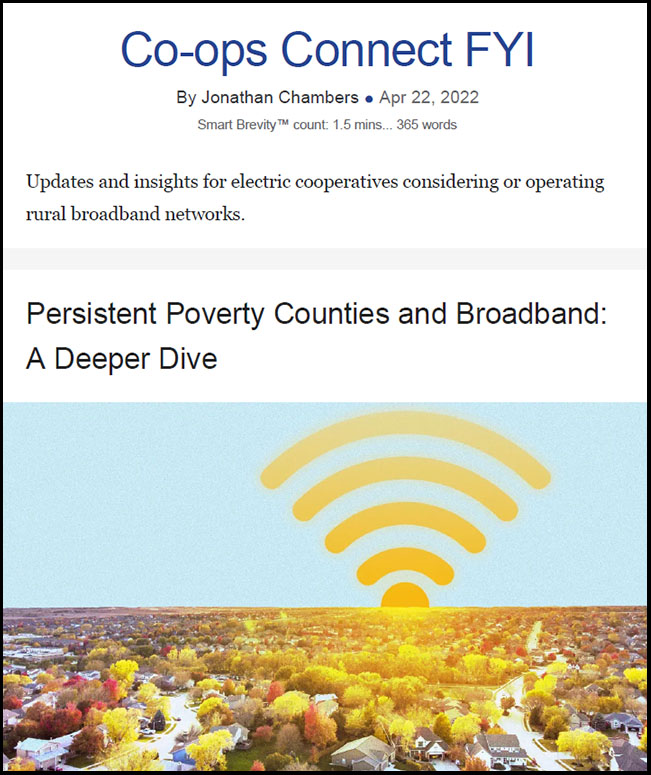Persistent Poverty Counties and Broadband: A Deeper Dive
April 22, 2022
Last week, I proposed an addition to the Affordable Connectivity
Program.
The current program:
- Qualifying low-income households can receive a $30 monthly subsidy to reduce the cost of a broadband subscription.
- Households in tribal lands can receive a $75 monthly subsidy.
- Households in high-cost areas where the service provider would otherwise cease operations can receive a $75 monthly subsidy.
(According to the statute, for a household to receive the high-cost area benefit, the service provider must show “particularized economic hardship to the provider such that the provider may not be able to maintain the operation” of the broadband network.)
The solution I’m proposing:
Every household in persistent poverty counties should also be eligible for the $75 monthly subsidy for broadband as part of the Affordable Connectivity Program.
Remember: A persistent poverty county is one in which over 20% of the population has lived below the poverty line for over 30 years.
The Impact on Rural America
This week, we prepared a few maps to illustrate where there would be an impact.
In the counties displayed, nearly 25 million people live in over 10 million housing units.
The vast majority of these counties are rural and served by electric cooperatives.
Across the country, 91% of households have cable or fiber broadband available to them.
That’s not the case in persistent poverty counties, which are far less likely to be served.
Most federal funding has been focused on high-cost areas, where terrain and population density have made it uneconomic to build cable or fiber networks.
But in persistent poverty counties, there is a lack of service even when the area is not costly to build.
The Bottom Line
My proposal in two parts:
I am suggesting that Congress through an appropriations bill or the FCC by its own authority:
1. Provide the $75 subsidy through the ACP to households in high-cost persistent poverty counties.
2. Require that the level of broadband services be comparable to that which is available in the nation’s more prosperous counties.
- In that way, the program will encourage investment in these communities.
Our next step will be a petition to the FCC. Stay tuned.
